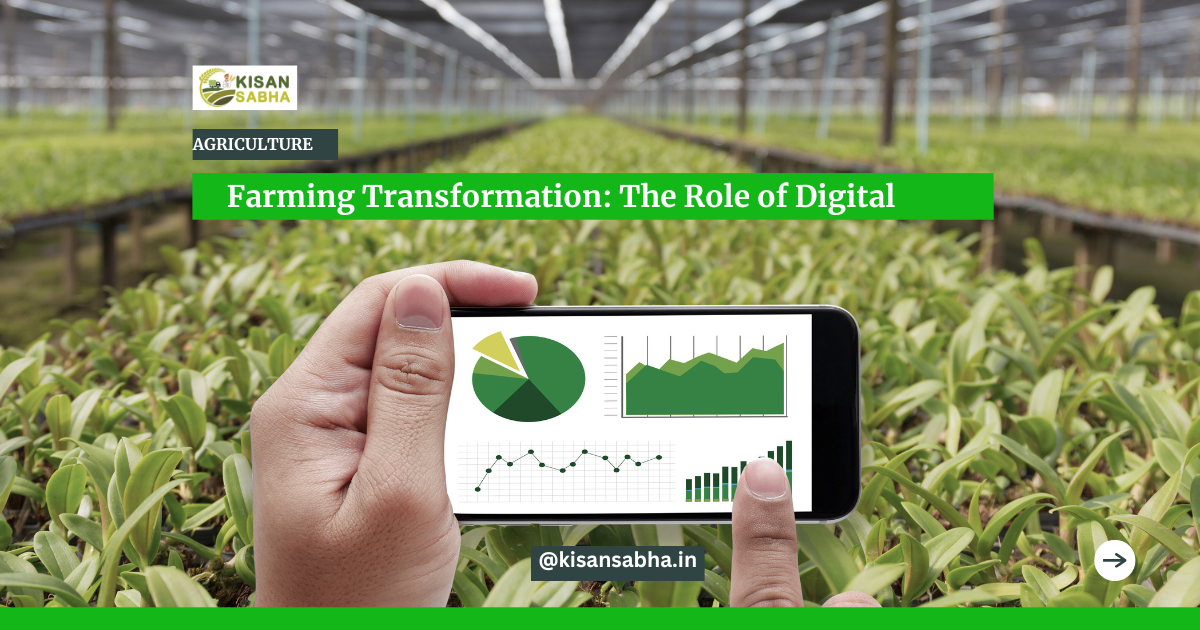For almost a decade, “digital transformation” has been the talk of the agri-food industry. It has made it possible for both corporate and public organisations to use advances in digital technology to rework procedures and find new business models.
The word “digital” does not, however, have the same meaning to everyone at every level of the organisation. While it might only refer to implementing contemporary technology to improve business operations and achieve a competitive edge for some, it may also entail strengthening customer interactions for others. For someone else, it can signify digitising all data to reduce costs and save time.
What part does “digital” play in the change of agriculture, despite all that it is and all that it can become? Why is it crucial for agricultural enterprises to match their strategies with the planned digital transformation of the company?
Today’s Agriculture and the Digital
The use of technology is one of the essential components that constitute “digital” in agriculture. Agritech, as it is more popularly known, is the umbrella term for the use of contemporary technologies and the internet to reimagine agriculture as a global activity. Due to their ability to access and analyse previously unheard-of volumes of agri big data, large and medium-sized businesses now have the ability to add value to the processes they manage.
Due to the availability of farm-level data from a number of sources, such as mobile agriculture apps, sensors, drones, farm equipment and machinery, robotic devices, and other IoT devices, producers may gather vital farm data at all times. When integrated with satellite and weather-based data, crop producers can use this data to evaluate the performance of the farm plots, monitor crop development in real time, and realistically anticipate the production for each farm plot.
Precision agriculture offers a wide range of options for using artificial intelligence to optimize farm activities. It enables growers to transform raw agri data into actionable insights that assist enhance harvest quality and quantity. AI is also helping farmers to select the best crops and crop varieties for their location and to employ agricultural automation to maximize resource efficiency.
The digitization of the entire process, from production and harvesting to warehousing and distribution, is improving communication among the numerous stakeholders in the agri-ecosystem. Digitalization has also increased visibility for the various participants throughout the supply chain, making the process more transparent and efficient.

What Is the Impact of Going Digital in Agriculture?
Enhanced productivity
Agriculture 4.0 has provided food producers with a slew of farm automation tools and data management solutions, allowing them to increase resource and agricultural output. Farms that have embraced technological improvements have seen a clear movement away from traditional, time-consuming methods and toward more advanced, cost-effective operations. Furthermore, the usage of digital agriculture can help management link their organizational plans with the Sustainable Development Goals by assuring more sustainable and resilient agri-food systems globally.
Improved farmer income
Understanding agricultural science and enhancing agronomic techniques to provide better results are key components of digital farming. Scalable and affordable solutions also make it easier for large and medium-sized businesses to disseminate a tried-and-true set of techniques to farmers, especially in developing regions, to encourage them to embrace more scientific farming practices. Agri-technology utilization boosts farm output and aids in lowering crop losses brought on by pests, illnesses, and unpredictably bad weather. Farmers can consequently make more money at the conclusion of each season.
Improved market linkages
Digital solutions facilitate the virtual integration of numerous stakeholders, giving producers more direct access to, among other things, financial services, commodity dealers, and agri and agricultural inputs. This specifically aids smallholder farmers in overcoming some of their difficulties, such as a lack of knowledge about current commodity pricing and other crucial market information, a lack of skills to bargain for payment, and a lack of access to other purchasers in the market.
Intelligent decision-making
The ability to get precise data in close to real-time is yet another great advantage of implementing a digital farm system. Producers may better plan farm operations and manage resources thanks to a combination of farm and satellite imaging-based data that offers actionable insights on production based on a variety of growing circumstances.
Conclusion
Modernising agricultural practises, increasing value for all ecosystem stakeholders, and providing nutritious food to people all over the world are just a few of the broad-spectrum developments that digital agriculture is pushing in the business. Thanks to the transparency offered by modern technology, producers can manage supply and demand while also adopting the best practises for a sustainable future. It is reasonable to assume that this is just the beginning of the revolutionary possibilities that await us in the near future since the circumstances are in place for an explosion of efficient technological advances in the field.
Visit us- kisansabha.in now!!

